Our friends from XFX have been pretty successful in finding recipes that turn the the ordinary slumbering reference card into an awakened beast. Their “XXX” trademarked method has been quite successful over the years and our today’s XFX HD 5750 740M 512MB DDR5 DP HDMI DUAL DVI PCI-E XXX – YHDA card will show what happens when XFX takes matters into their hands.
AMD launched its Juniper-based HD 5750 graphics card with 1024MB of GDDR5 but not long after the launch, partners have started offering 512MB versions. Naturally, this reflects on the performance and gets more evident as high resolutions and antialiasing get in the game. Note however that Radeon HD 5750 is not a high-end gaming card, so if you’re still keen on gaming you’ll probably linger around 1680x1050. Good thing about the HD 5750, as well as HD 5770 is that they use GDDR5, which provides enough bandwidth (73.6GB/s) despite the memory running on 128-bit interface.
By overclocking the HD 5750 740M 512MB XXX, XFX managed to match and quite often exceed the performance reference HD 5750 1024MB cards offer. Naturally, we’re talking about 1680x1050 or lower resolutions, as higher resolutions and texture packs won’t really like the HD 5750 740M 512MB’s smaller frame buffer, and higher clocks won’t really help in higher resolutions. This means that if you’re looking to add an Eyefinity setup to your rig, meaning working/gaming on three monitors, the 512MB might not be the wisest choice.
We’ll soon look at HD 5750 740M 512MB’s results, which confirm that in most cases (and at aforementioned resolutions), the card runs better than the reference HD 5750 1024MB. The GPU runs 40MHz faster than reference 700MHz, whereas the memory is up from 4600MHz to 4800MHz.
Radeon HD 5750 is a DirectX 11 card with all AMD’s currently hot techs, such as ATI Eyefinity. Not that all XFX cards get XFX’s 5-star support and our today’s card puts an emphasis on the Assasin’s Creed.
The following picture shows the rest of important info on HD 5750 740M 512MB XXX.
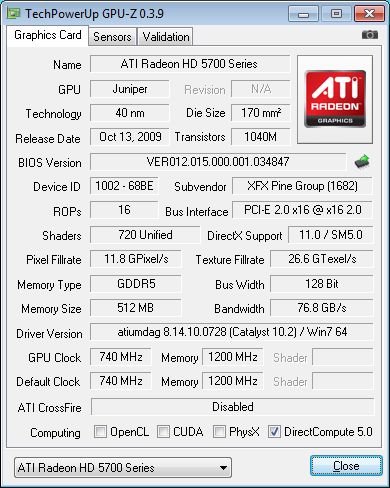
The packaging is similar to the rest of XFX’s HD 5800 and 5700 offer – small and sturdy.
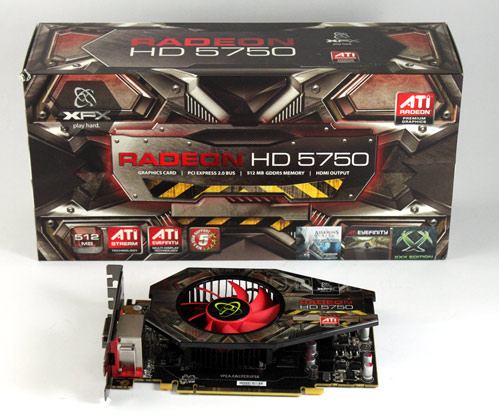
click to see larger picture
You’ll notice a small Assassin’s creed picture on the front, meaning that XFX has got you covered for instant out-of-the-box gaming.
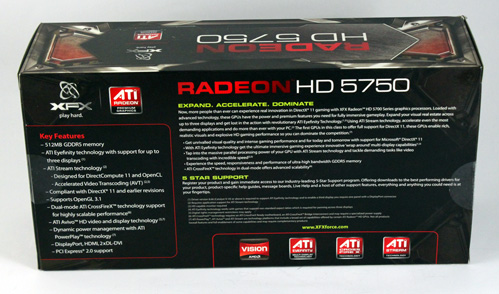
The back of the box shows XFX HD 5750 740M 512MB XXX - YHDA basic features and lists other specs such as 512MB of GDDR5, HDMI and DisplayPort outs, ATI Eyefinity multi-monitor support, DirectX 11, ATI Stream technology, PCI Express 2.0, CrossfireX support, etc.
HD 5750 740M 512MB DDR5 DP HDMI DUAL DVI PCI-E, which is the card’s full name, comes in sturdy dual packaging. The smaller top package holds Assassin’s Creed game, driver CD, installation guide, quick installation guide, multi-language user guide, molex-to-6-pin cable adapter, DVI-VGA Adapter, and XFX's "Don't Disturb I'm Gaming" door sign. You can see what the package holds on the following picture.

Radeon HD 5750 reference card comes with dual-slot cooling and a pretty quiet fan, which is placed within the aluminum block that leans on the GPU. The following picture shows the XFX 5750 740M 512MB DDR5 DP HDMI DUAL DVI PCI-E XXX – YHDA which is physically hardly different from the reference HD 5750.
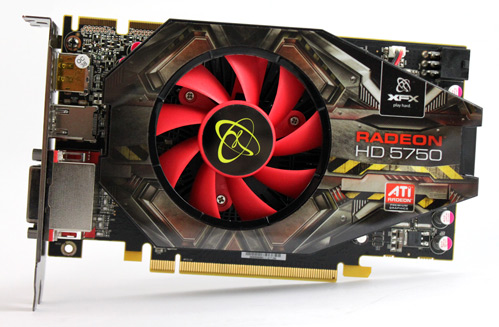
click to see larger picture
The only difference we see between our today’s card and the first XFX HD 5750 models with reference cooling is that the XFX 5750 512MB XXX’s cooling has sharp edges, unlike the curved edges on the reference models. Basically, the only difference is in the plastic hood, whereas the fan and the heatsink remained the same.
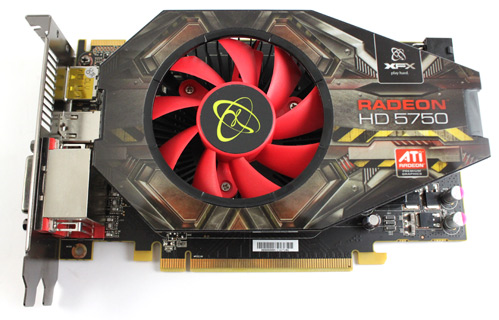
Cooling performance is enough to keep the HD 5750 740M 512MB XXX’s GPU temperatures in check. The fan is 7cm in diameter and the temperatures rarely exceed 82 degrees Celsius. The highest temperature we measured on the HD 5750 was 85 degrees Celsius, but those were measured in the most intensive tests. The cooler is very quiet in idle mode, and it wasn’t loud in 3D.
The XFX HD 5750 740M XXX card’s PCB is 18.2cm long, which is about 2/3 size of the Cypress HD 5870 card. The consumption isn’t very high and will hit 86W in worst case scenarios, which means that the card requires one 6-pin power connector. AMD uses power-saving tweaks that help the HD 5750 to draw only 16W in idle.
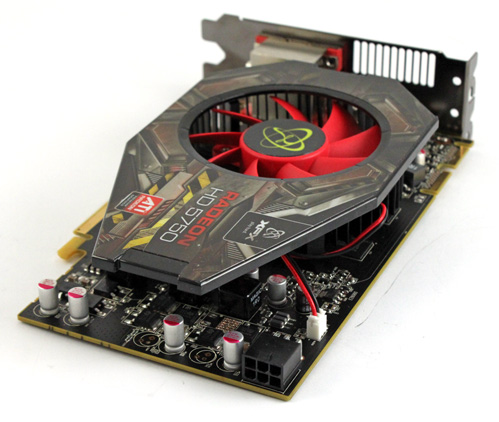
As you can see from the following picture, the cooler doesn’t touch the memory. Unlike the HD 5750 1GB, which has 512MB of memory on each side of the PCB, the HD 5750 512MB XXX’s memory is entirely on the GPU side of the PCB. We’re talking about 4 Hynix chips with peak clock rate at 1250MHz (5000MHz effectively).
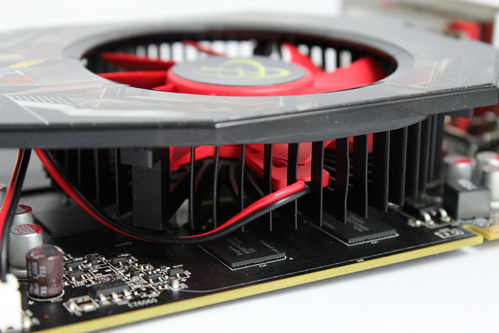
Apart from the option to chain up to three monitors on one card, the HD 5750 allows for using them as one monitor with a higher resolution spread across three monitors. The card comes with two dual-link DVI outs, one HDMI and one DisplayPort and they can be mixed for any combination of three digital outputs as long as one of the three outputs is DisplayPort. Otherwise you are limited to two DVI outputs or to one HDMI plus DVI output, or in other words – you can’t use DVI/DVI/HDMI combination.
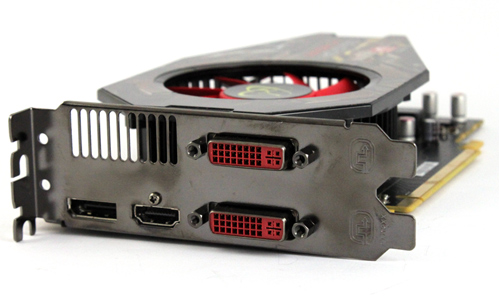
Crossfire performance scaling is getting better with each model, and this card supports this feature as well.

Testbed:
Motherboard: Elitegroup X58B-A (provided by Elitegroup);
Processor: Intel Core i7 Extreme 965 (provided by Intel);
Memory: 6GB Corsair Dominator 12800 7-7-7-24 (provided by Corsair);
HDD: WD VelociRaptor 300G 10,000RPM (provided by SmoothCreation);
Power Supply: CoolerMaster Ultimete 1100W (provided by Cooler Master);
Case: Obsidian 800D (provided by Corsair);
Fan Controler: Kaze Master Ace 5.25" (provided by Scythe);
Cooler: ECO A.L.C. (provided by CoolIT)
Operating System: Win7 64-bit;
Driver: Catalyst 10.2 ; Forceware 196.34;
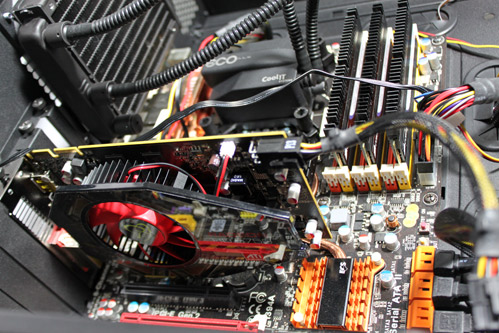
XFX HD 5750 512MB XXX YHDA proves that it’s possible, at least in certain scenarios, for a card with less memory but higher clocks to beat a card with more memory and lower clocks.
If we compare XFX HD 5750 512MB and the reference HD 5750 1024MB in synthetic tests, it’s obvious that memory requirements rise only in extreme scenarios with higher resolutions, detail settings, etc.
HD 5750 XXX card scores almost 10% better than reference HD 5750 in Vantage Performance test, but the same advantage practically melts to almost zero in Vantage Xtreme.
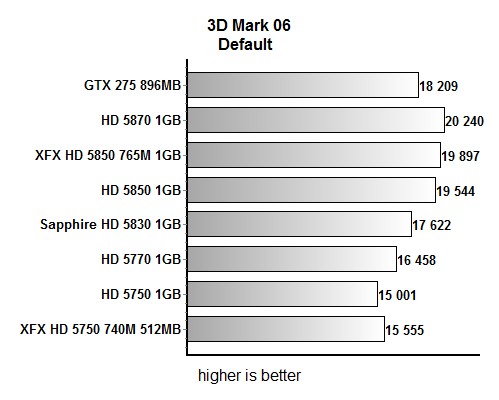
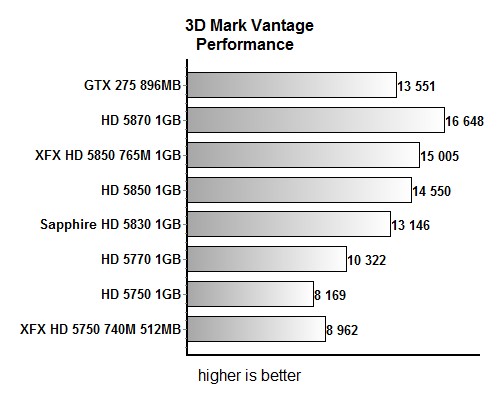
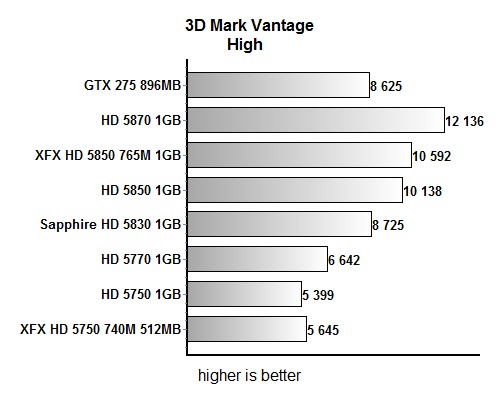
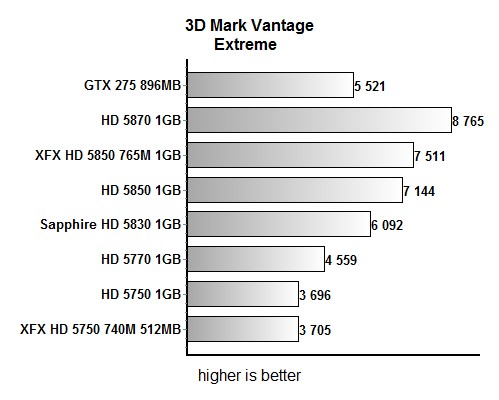
Throughout gaming tests, we’ll try to show the dependence of HD 5750 on the amount of memory. XFX HD 5750 512MB XXX card comes with 512MB of memory, which is half of what the reference HD 5750 brings. Naturally, any assumptions of performance dominance go straight out the window after you consider the fact that the XFX HD 5750 512MB XXX comes with higher operating clocks that secure initially superior performance.
The results show that the HD 5750 740M 512MB XXX manages to beat its reference counterpart at 1680x1050, but not on 1920x1200. It’s well worth noting that this exception stands only in Crysis, whereas the rest of the games scored better with HD 5750 740M 512MB XXX. Naturally, the 2560x1600 resolution, detailed textures and antialiasing have proven to be too tough a nut to crack for the HD 5750 XXX’s 512MB of memory.
Far Cry 2
The HD 5750 740M 512MB XXX outpaces the reference HD 5750 1024MB by about 5% without antialiasing, but it manages to score nicely with antialiasing as well, except on 2560x1600 where 512MB is obviously not enough to churn out a playable framerate.
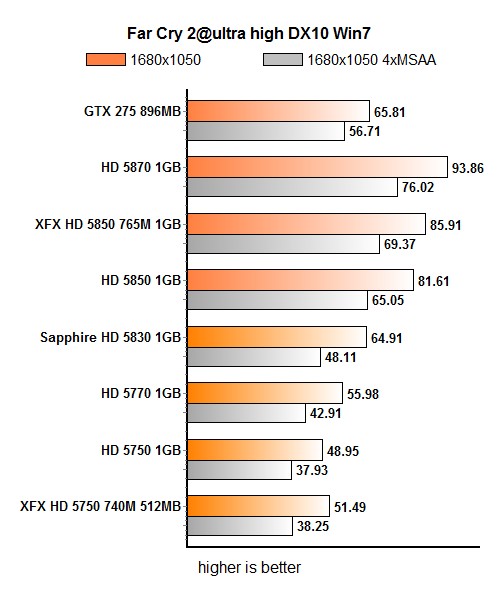
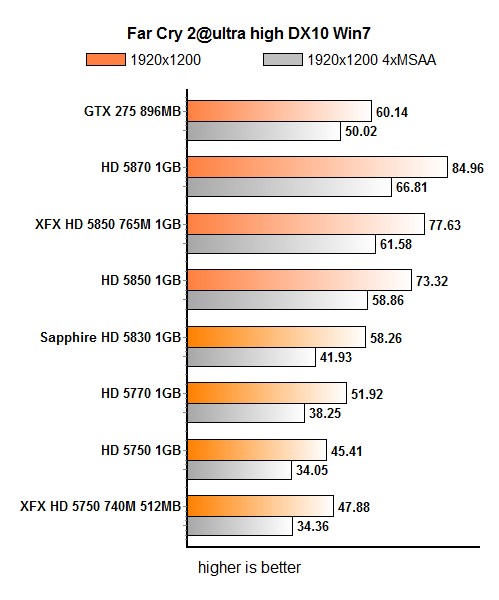
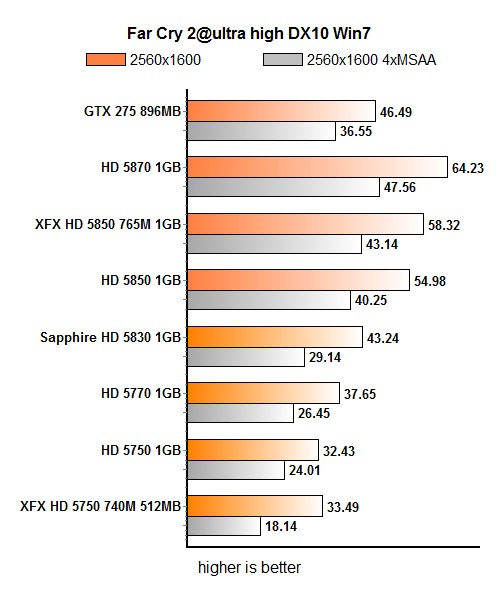
Crysis
If you play without antialiasing, the XFX HD 5750 740M 512MB XXX will be about 4% faster than the reference HD 5750 1024MB.
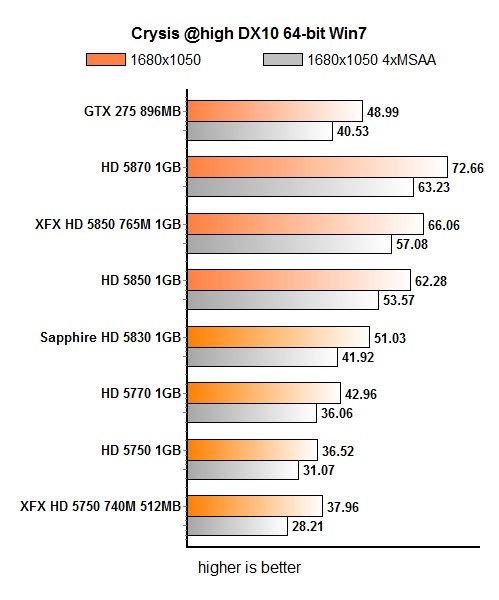
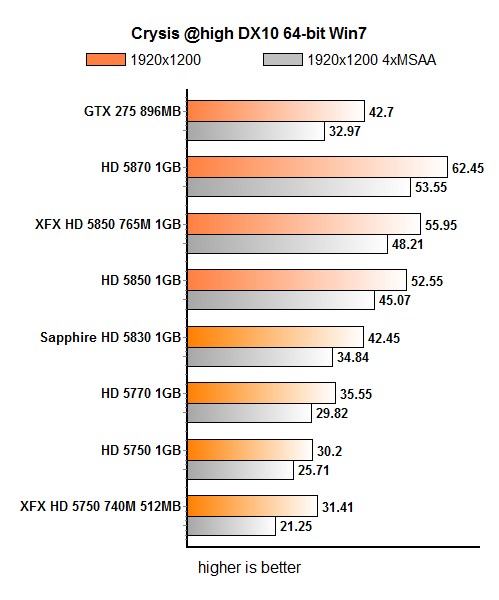
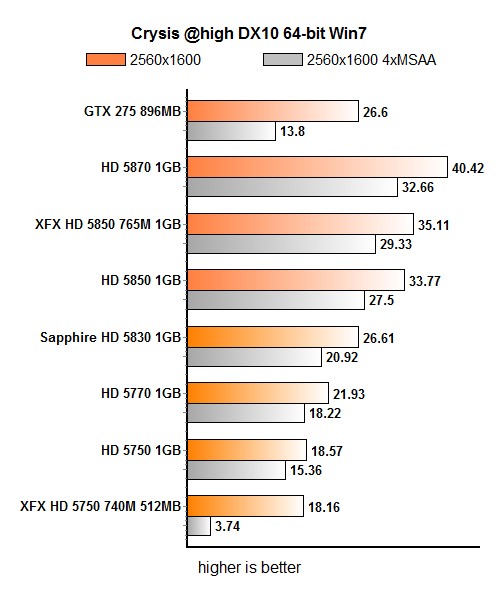
Dirt 2
Dirt 2 allows for gaming at 2560x1600 but only if you turn antialiasing off. The XFX HD 5750 740M 512MB XXX’s 512MB frame buffer obviously isn’t up to the task of tackling such high resolutions, but managed to outscore the reference HD 5750 1024MB by up to 3.6% in the rest of the tested resolutions.
Compared to the reference HD 5770 1024MB card, the XFX HD 5750 740M 512MB XXX is some 13% behind.
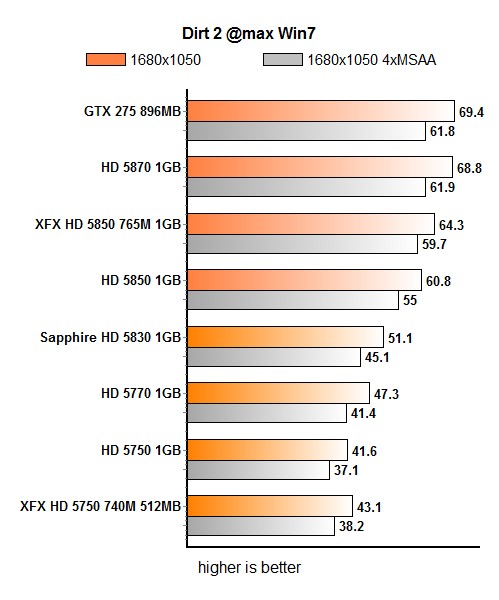
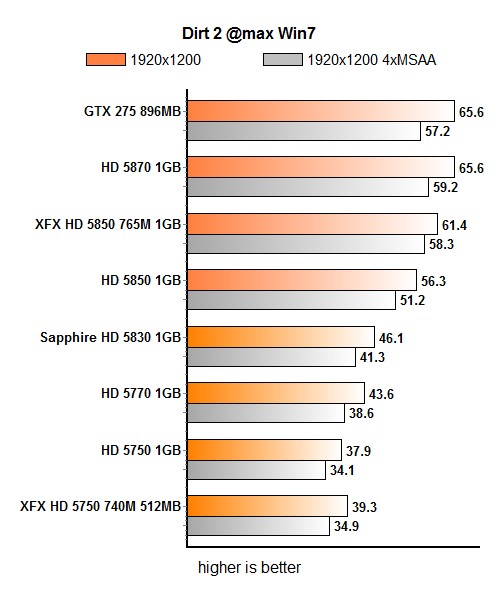
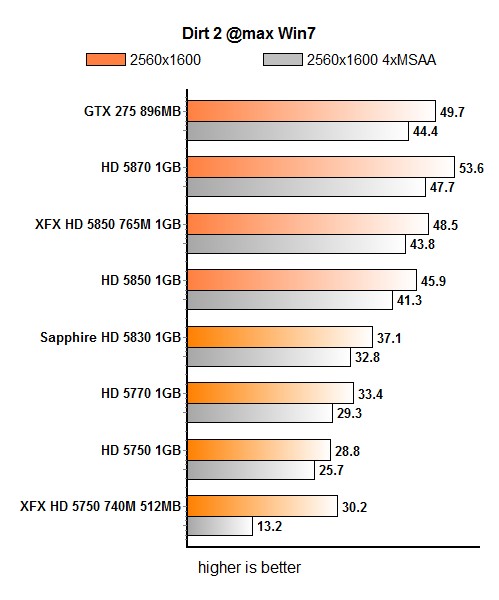
We didn’t use 2560x1600 results in the following three games as the XFX HD 5750 740M 512MB XXX doesn’t quite fare well at these high settings. With this card AMD aimed for occasional gamers who stick to 1680x1050 or similar, and we’ve already proven that that resolutions is the XFX HD 5750 740M 512MB XXX’s sweet spot. It’s well worth noting that all our today’s tested games were playable at this resolution, even with filters on.
World in Conflict
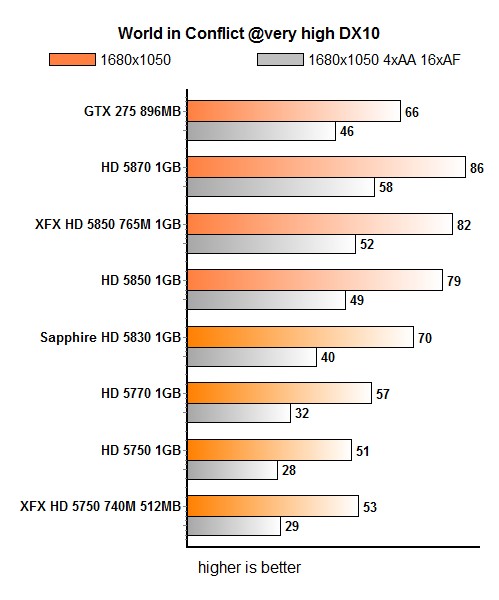
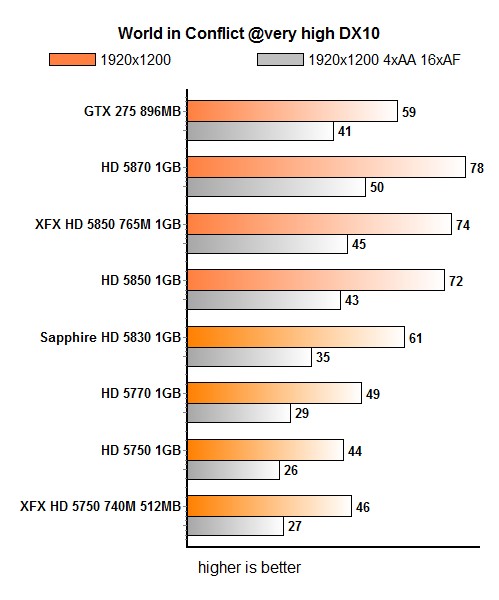
Left 4 Dead
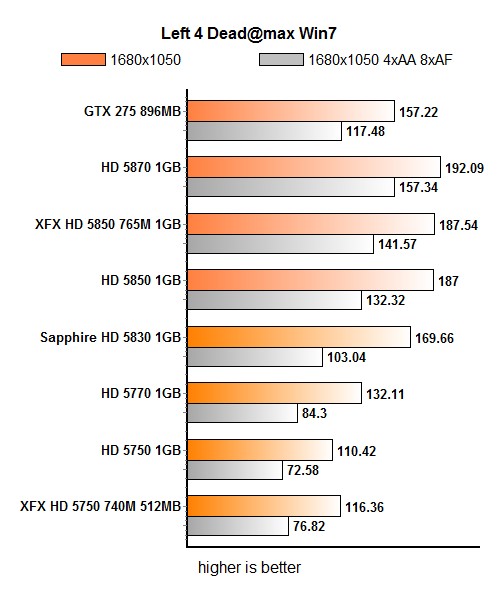
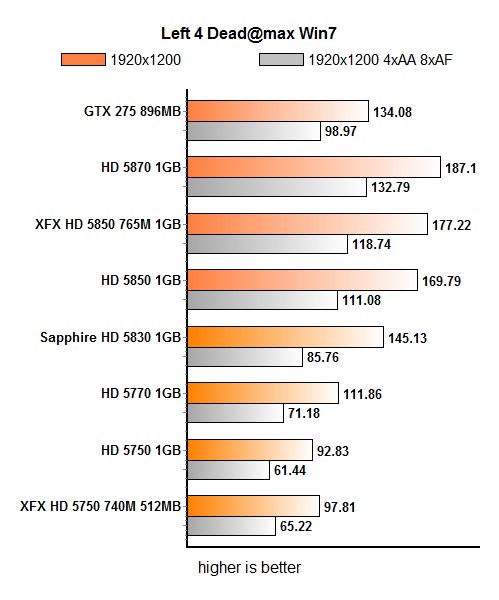
HAWX
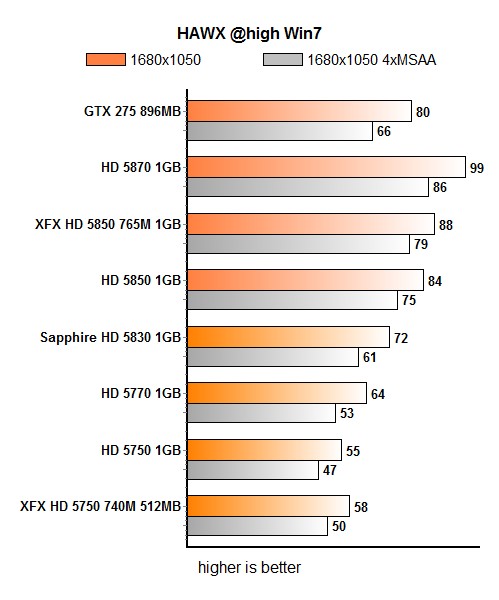
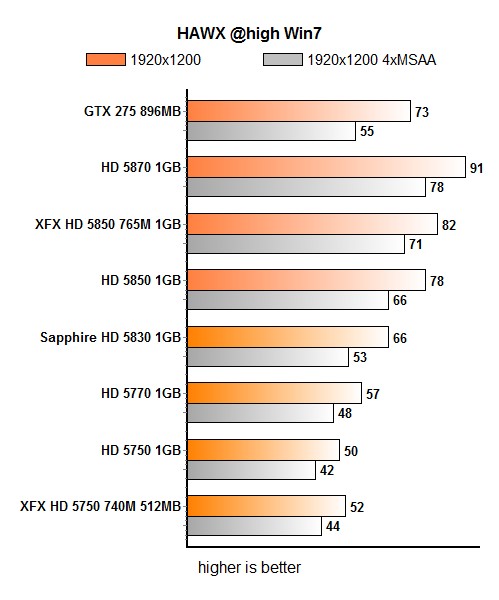
With the HD 5750 740M 512MB XXX - YHDA card, XFX managed to pull off a feat that has proven to be too difficult for the reference card – to beat a reference HD 5750 with 1GB of memory. Although XFX HD 5750 740M XXX comes with only 512MB of memory, XFX pushed the clocks up to the point where it manages to beat the HD 5750 1GB reference card at 1680x1050, as well as 1920x1200.
Overclocking is quite often a pro and a con at the same time; while it does bring superior performance, such cards are usually priced higher. So, for about 110 euro, here, you can choose between the reference HD 5750 1GB or XFX HD 5750 740M 512MB XXX card.
The XFX HD 5750 740M 512MB XXX card is great for gaming as our testing shows that most games are playable even on 1920x1200, and we can’t forget DirectX 11 support.
If you’re in a dilemma on whether to purchase XFX’s overclocked XFX HD 5750 740M 512MB XXX card or the reference HD 5750 1GB version, the former card might have an upper hand as it comes with Assasin’s Creed gift game and we can’t forget XFX’s 5-star support.

